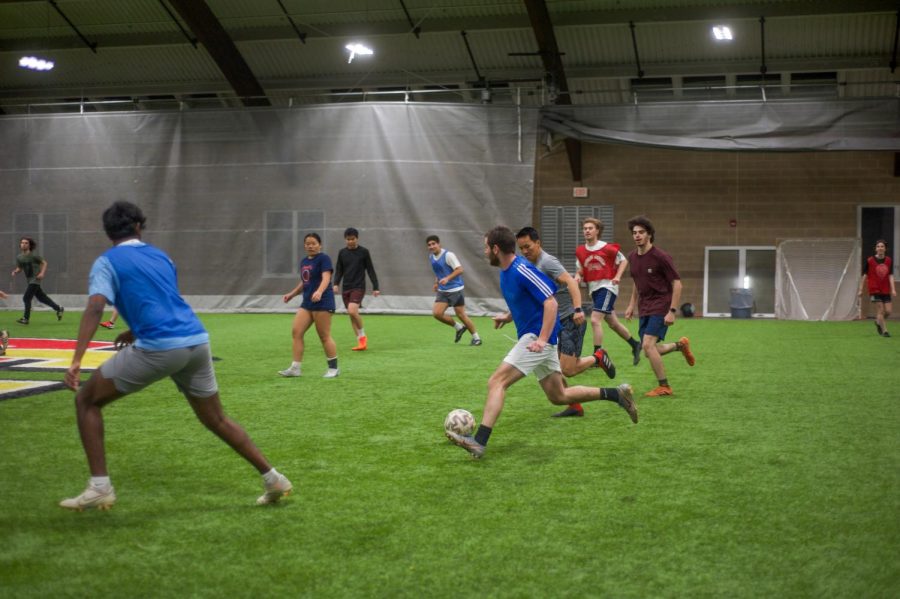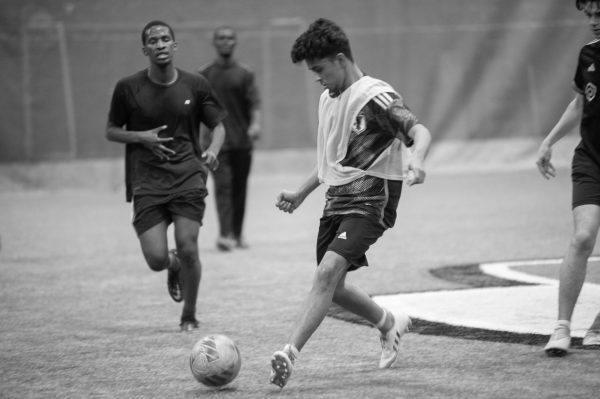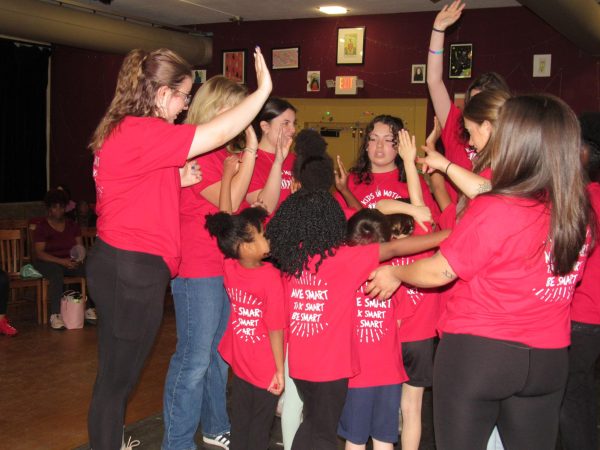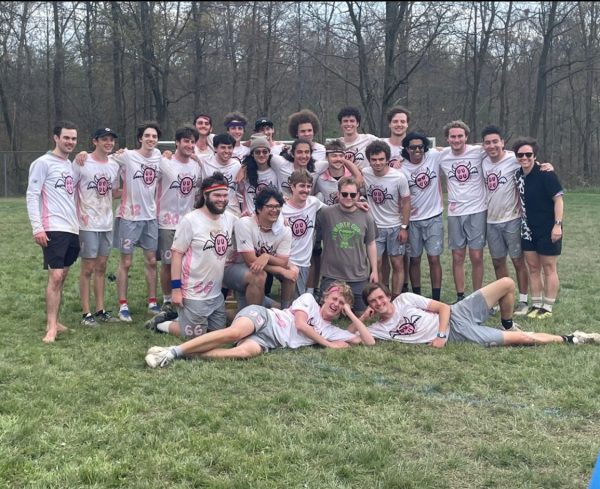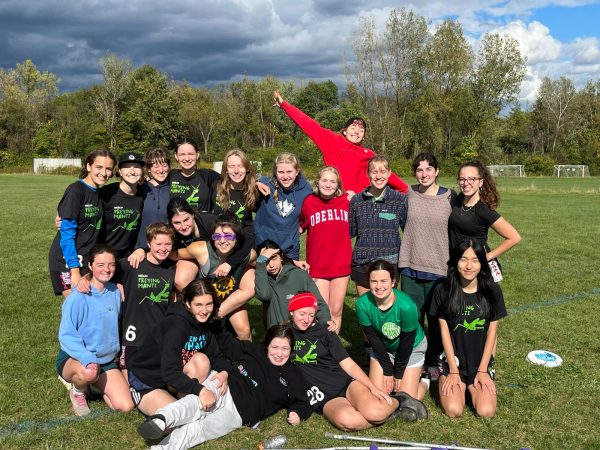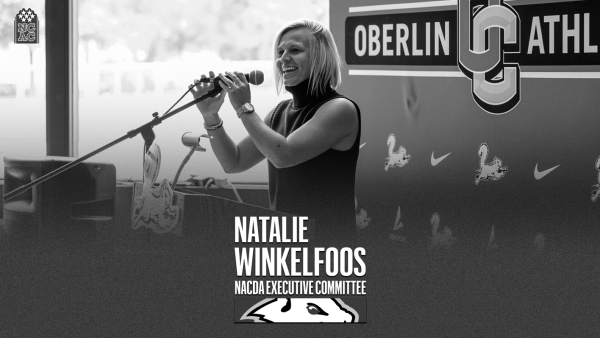Club Soccer Provides Inclusive Space for Students To Work On Skills
Photo by Erin Koo, Photo Editor
The club soccer team held one of its final practices of the season Thursday night.
As they are in a far more casual environment than varsity teams, club and intramural sports offer students the opportunity to rekindle their love for athletics. The perfect example of this at Oberlin is the club soccer team. The focus of club soccer is not winning but rather enjoyment and fun.
“As captains, we’ve heavily focused on being inclusive — we definitely prioritize everyone having a chance to get on the ball and improve their skills over playing the highest level of soccer possible,” College second-year and captain of club soccer Noah Elazar wrote in an email to the Review. “I think this has resulted in people coming to play soccer for the first time and then returning again and again and improving a ton. We’ve also had the opportunity to hold a lot more events and do a wider range of activities as a club.”
The club soccer team has found a great deal of success and has even gone outside the scope of the game of soccer, hosting events within the Oberlin student body for various communities.
“We’ve held social events such as watch parties and team dinners and expanded the variety of our practices,” Elazar said. “We’ve consistently run a practice for women and nonbinary players and even played some futsal in Hales [Gymnasium] during the winter. Overall, I think — and hope — we’ve created a community where everyone feels comfortable and enjoys spending time with each other.”
Club soccer has created a communal atmosphere in which everyone can thrive, regardless of skill level. The organization has hosted many social events that have brought people together across campus.
“We’ve had about two events each semester at my house on Union Street,” fourth-year and club social chair Emily Milnamow said. “It’s been really incredible to plan events for a group of people like those involved with club soccer. It’s a lot of people from different years and majors. It just feels like a great mix of people who wouldn’t come together otherwise.”
However, not all club teams across the country take this approach. Elazar noted that during competitions with other schools, the difference in spirit has been notable.
“We enjoyed playing together as a team and having the chance to play against other schools, but on the other hand, the other schools’ clubs definitely had different priorities,” Elazar said. “Most of [the other teams] were there to compete and be the best [on the field], while we were more interested in having a good time and making sure everyone got involved. We did manage to make friends with the Wittenberg [University] team, however.”
The friendship turned into a friendly match last weekend as Oberlin hosted Wittenberg — which made the nearly three hour trip — at North Fields. Oberlin won the game, but athletes on both sides showed great sportsmanship while playing quality soccer.
Elazar emphasized the variation in competitiveness of practices, intercollegiate games, and intramural games. The intramural tournament that started late in the fall semester and ran until April gave members of the club a chance to compete against each other.
“The intramural tournament we had was a much better environment for our club,” he said. “It gave people the opportunity to be a bit more competitive than normal practice but in a much less intense situation.”
The final competition for Oberlin club soccer this academic year will be a match against the Flying Horsecows — Oberlin’s men’s ultimate Frisbee team — Sunday at 9 p.m. on Bailey Field.


